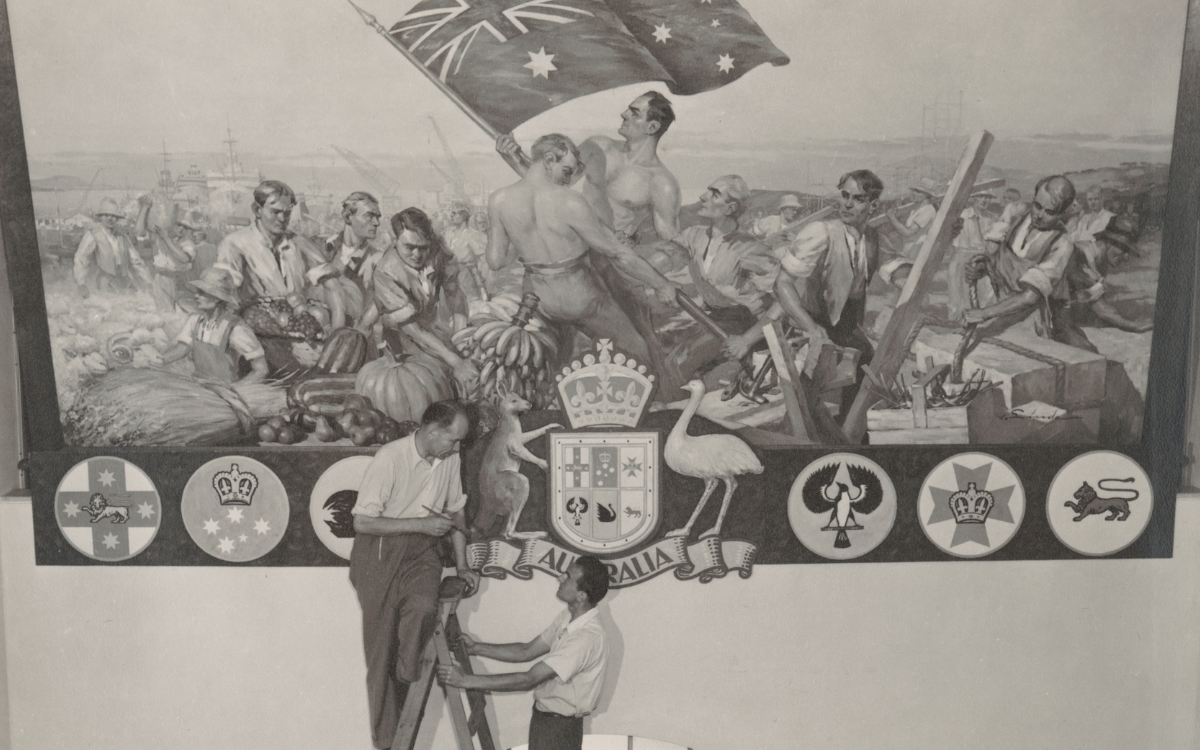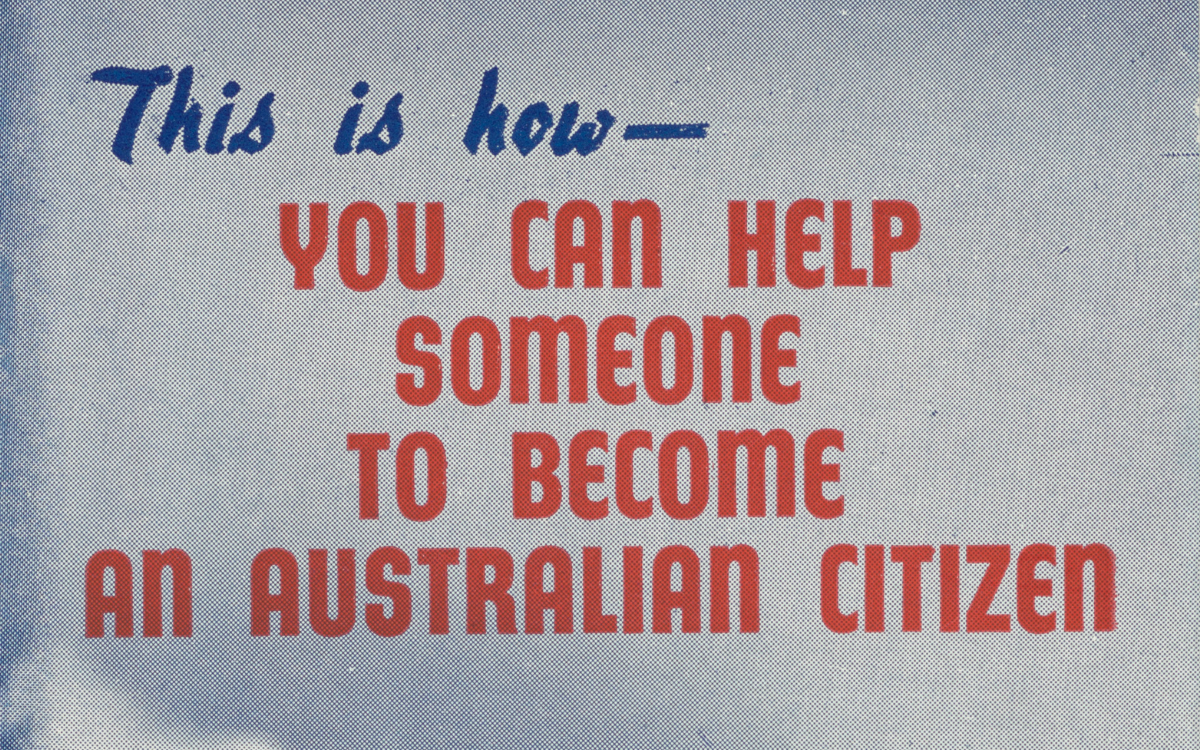
Verners and Girts Linde with their mural for the arts and craft exhibition at the Australian Citizenship Convention, 1950, nla.obj-141277377

June Orford, Dr Nouria Salehi in the kitchen of her restaurant, Afghan Gallery, Melbourne, 2006, nla.obj-137244428

Photo of Lorenzo and Joyce Gamboa holding ‘The Battling Gamboas’, an article about the couple that lobbied for Lorenzo to gain Australian citizenship from the Papers of the Gamboa family 1949-1999, nla.cat-vn997866

'This Is How — You Can Help Someone to Become an Australian Citizen' pamphlet (detail) issued by the Commonwealth department of Immigration from the Papers of John Massey, 1949-[ca. 1960], nla.cat-vn2968699
During the later years of the Second World War, the Australian Government began planning for an expanded immigration program. A rapidly growing population was seen as the best way to defend a nation that had feared a Japanese invasion during the war. A target of 70,000 migrants a year was set, and while the emphasis was on British migrants, the government began an advertising campaign to encourage the Australian public to accept a wider range of European migrants.
All self-governing nations of the Commonwealth agreed that each nation could define its own citizenship in 1947. The Australian Nationality and Citizenship Act 1948 was used as an incentive to encourage non-British migrants to assimilate so they could be rewarded with full citizenship. The White Australia policy began to be dismantled, starting in 1958 when the infamous dictation test was replaced by a visa system. From 1966 potential migrants were assessed by their qualifications and suitability to settle rather than by their race or nationality. In 1973 further changes were made, and migrants became eligible to apply for citizenship after three years of residence, regardless of race.
In the 1970s Australia moved beyond assimilationist policies to a new vision of a multicultural Australia. The country’s migrant intake was becoming more diverse than it had ever been.



